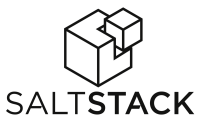I, along with seemingly everyone else, am jumping on the automation bandwagon as much as I possibly can. There are a ton of options out there from vendors and then several open-source(ish) solutions out there as well. In this article I’m going to go through what it takes to get started with SaltStack (or Salt for short). Some opine that Salt is a configuration management tool for the operations side of IT, making the scripting/dev part easier while still maintaining some flexibility and offering some awesome orchestration.
Salt is built for simplicity and is founded on remote execution. It uses what is called a ZeroMQ topology to enable high speed communication. ZeroMQ allows for parallel communication between many nodes in a datacenter.
Salt is similar to Puppet Enterprise in that it runs a master server with clients which in the Salt world is referred to as the Master and Minion roles. For my Salt master I chose to use Ubuntu 14.04. However, there are several options. The following steps are all for Ubuntu, though.
Install Salt
First I added the Salt repository and updated the software packages on the linux VM:
To read the rest of the article please click here.
